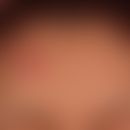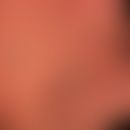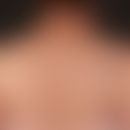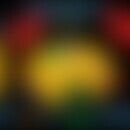Synonym(s)
DefinitionThis section has been translated automatically.
Geroderma osteodysplasticum is a rare autosomal recessive disorder characterized by wrinkled skin on the back of the hands and feet and abdomen, signs of progeria, hip luxation, dwarfism, hyperextensible joints, osteoporosis, vertebral anomalies, spontaneous fractures, prognathism, and an elongated and wrinkled face and mild intellectual deficits.
Occurrence/EpidemiologyThis section has been translated automatically.
Prevalence: <1 / 1 000 000
You might also be interested in
EtiopathogenesisThis section has been translated automatically.
This is caused by mutations in the GORAB gene (SCYL1BP1). There are large phenotypic parallels (progeroid characteristics) with cases where mutations in the PYCR1 gene (ARCL3B) were detected (Yildirim Y et al. 2010).
ManifestationThis section has been translated automatically.
Newborn age
General therapyThis section has been translated automatically.
Bisphosphonates can be used successfully in severe osteopenia
Progression/forecastThis section has been translated automatically.
Patients with GO have a normal life expectancy, in most cases the intelligence is normal. In the course of the disease the symptoms improve, especially the frequency of bone fractures decreases with age.
LiteratureThis section has been translated automatically.
- Kouwenberg D et al (2011) Recognizable phenotype with common occurrence of microcephaly, psychomotor retardation, but no spontaneous bone fractures in autosomal recessive cutis laxa type IIB due to PYCR1 mutations.Am J Med Genet A 155A:2331-2332
- Scherrer DZ et al (2013) Mutations in PYCR1 genes in three families with autosomal recessive cutis laxa, type 2 Eur J Med Genet 56: 336-339.
- Yildirim Y et al (2010) The phenotype caused by PYCR1 mutations corresponds to geroderma osteodysplasticum rather than autosomal recessive cutis laxa type 2 at J Med Genet A 155A:134-140.
Disclaimer
Please ask your physician for a reliable diagnosis. This website is only meant as a reference.




